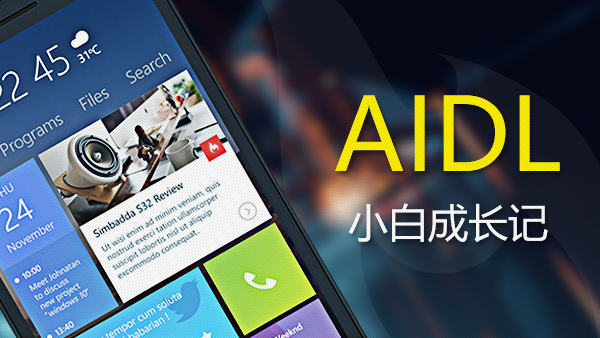介绍
是square公司出的一个事件库(pub/sub模式),用来简化应用程序组件之间的通讯。
square官方对于这个库的解释原文如下:
An enhanced Guava-based event bus with emphasis on Android support.Otto is an event bus designed to decouple different parts of your application while still allowing them to communicate efficiently.Forked from Guava, Otto adds unique functionality to an already refined event bus as well as specializing it to the Android platform.
翻译:OTTO是基于Guava项目的Android支持库,如果你在Android程序开发的过程中想要不同的组件之间进行有效的通信可以使用这个库。通过otto库可以。
所以可以定义:Otto 修改自Google的Guava库,专门为Android平台进行了优化。
有兴趣学习源码的小伙伴,可以直接戳这里:
Otto https://github.com/square/otto
使用
Otto本身是为Android平台专门开发的,建议在使用的时候使用单例模式
**
* Get the instance of {@link Bus}
*
* @return
*/ public static synchronized Bus get() { if (sBus == null) {
sBus = new Bus(ThreadEnforcer.ANY);
} return sBus;
}当然,这算是比较low一点的单例模式,高级一点的可以使用相应的一些注解annotation来更加便捷的实现,这里只是入门使用的方法解析,我们不予讲解。
注册
otto中第一步就是注册,我们需要在使用的Activity或Fragment等控件中注册,位置可以随意,但是建议与生命周期同步。这样可以伴随生命周期进行注册和撤销注册。
Actvity中使用
@Override
protected void onCreate(Bundle savedInstanceState) { super.onCreate(savedInstanceState); //todo dosomething here
RxBus.get().register(this); //todo dosomething here
} @Override
protected void onDestroy() { super.onDestroy(); //todo dosomething here
RxBus.get().unregister(this); //todo dosomething here
}Fragment中使用
@Nullable
public View onCreateView(@NonNull LayoutInflater inflater, @Nullable ViewGroup container,
@Nullable Bundle savedInstanceState) { //todo dosomething here
RxBus.get().unregister(this); //todo dosomething here
} @Override
protected void onDestroyView() { super.onDestroyView(); //todo dosomething here
RxBus.get().unregister(this); //todo dosomething here
}这里楼主是使用的RxBus来做的demo和代码演示,具体的用法具体根据各自业务分析。在onCreate中注册和在onDestroy中取消,将整个事件处理逻辑和生命周期绑定在一起
发送事件
发送事件就非常轻松,只需要调用Bus的post方法即可
普通用法
/**
* event的对象必须跟订阅事件的对象相同
* 例如:RxBus.get().post("我要吃饭了");
* 订阅事件必须为
* @Subscribe
* public void eat(String food) {
* // purpose
*
* }
* 其中监听对象和订阅对象均为String类型
*/RxBus.get().post(Object event)高级用法plus
/**
* event的对象必须跟订阅事件的对象相同
* 例如:RxBus.get().post("我要吃饭了");
* 订阅事件必须为
* @Subscribe(
* thread = EventThread.IO,
* tags = { @Tag("i love you")
* }
* )
* public void eatMore(final ArrayList<String> foods) {
* //线程为IO线程,无法做UI更新,需要切回主进程
* runOnUiThread(new Runnable() {
* @Override* public void run() {
* BaseUtils.Toast(foods); }
* });
* Log.log(foods);
* }
* 其中监听对象和订阅对象均为list类型,且tag为“i love you”
*/RxBus.get().post(“i love you”,list);订阅事件
订阅事件需要用到@Subscribe这个注解,我们废话少说,直接上代码:
简单用法
@Subscribe public void eat(String food) { // purpose
BaseUtils.Toast(food);
Log.log(food);
}高级用法plus
/**
* thread为进程,这里指定为IO进程
* tags 为标签,需要在特定的情况下使用
* @param foods
*/
@Subscribe(
thread = EventThread.IO,
tags = { @Tag("i love you")
}
) public void eatMore(final ArrayList<String> foods) { //线程为IO线程,无法做UI更新,需要切回主进程
runOnUiThread(new Runnable() { @Override
public void run() {
BaseUtils.Toast(foods);
}
});
Log.log(foods);
}生产者
说道这里,大家会觉得这有什么难的,那么我们的重点就来了,也就是OTTO的超级奥义 @Produce,正如名字翻译,生产者,这里可以用来做一些内容提供。
有时候当用户订阅某个事件的时候,希望能够获取当前的一个对象(可以为值,也可为一个对象,甚至一个集合,这里用对象来代替称呼)。
同时,如果该对象发生变化的时候,会自动通知所有订阅该对象的类更新对应的@Subscribe方法。废话不多说,直接上代码。
@Produce public String produceFood() { return "hello world!";
}
@Produce(
thread = EventThread.IO,
tags = {
@Tag(BusAction.EAT_MORE)
}
) public ArrayList<String> produceMoreFood(){
ArrayList<String> list=new ArrayList<>(); list.add("1"); list.add("2"); list.add("3"); list.add("4"); return list;
}
作者:诡异的叶子
链接:https://www.jianshu.com/p/049c8636b2d0

 随时随地看视频
随时随地看视频




